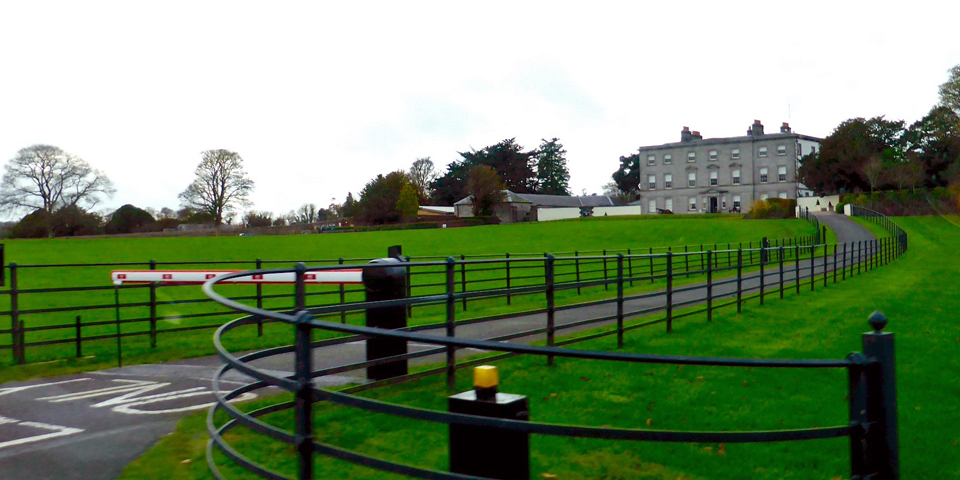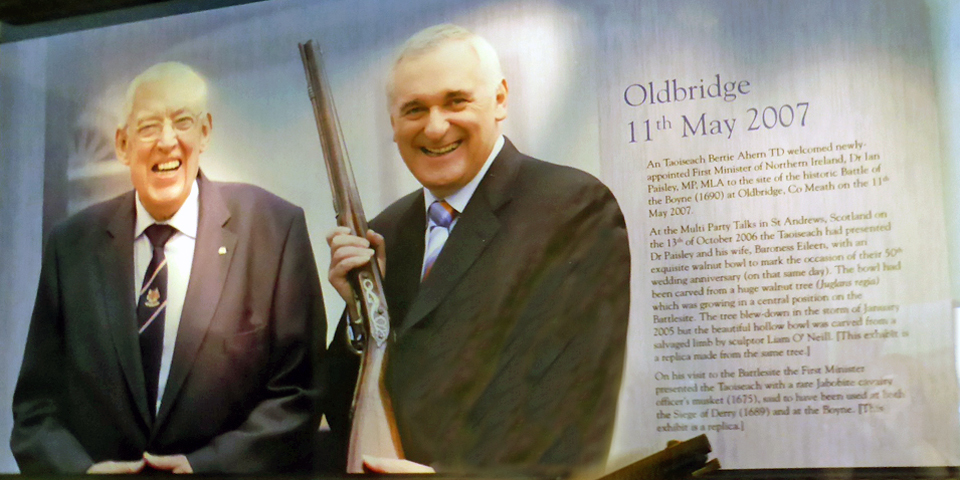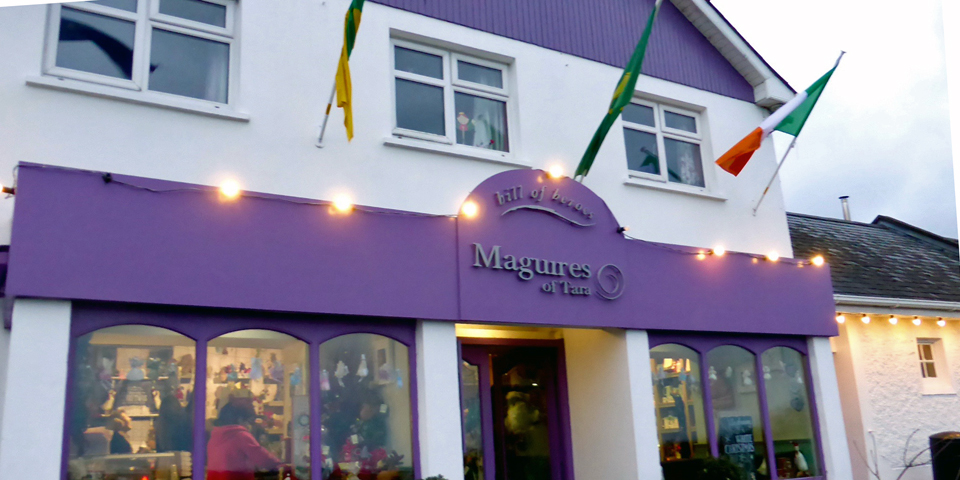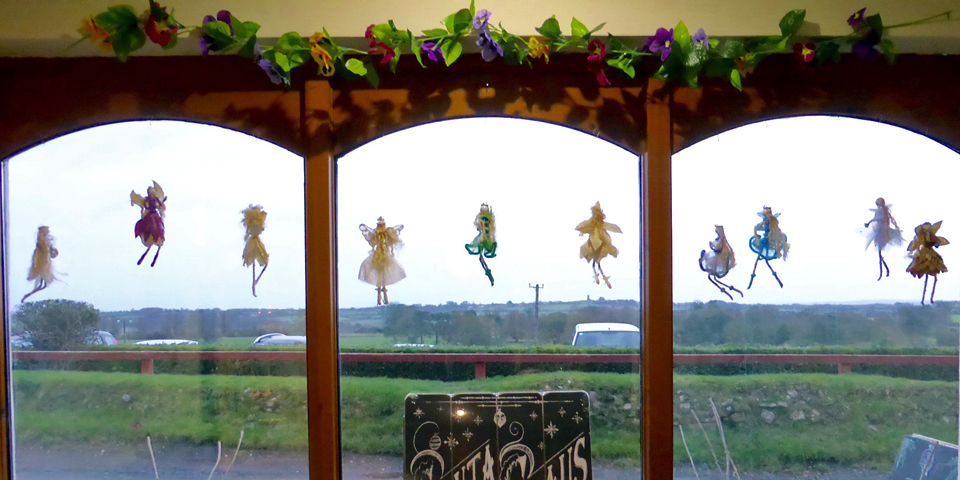Legendary and mystical: Ireland’s County Meath
County Meath is known as the Royal County. This land of monks and abbeys, Druids and fairies, and kings and castles was ancient Ireland’s capital and the seat of the Irish High Kings. This is where Ireland’s religions began and where the foremost battle in Ireland left scars that are still healing today.
Oscar Wilde’s father, Sir William Robert Wills Wilde MD, wrote that the history of Ireland can be traced through the monuments in the Boyne Valley. We explored the highlights during a day trip from Dublin.
Our tour along the 140 mile Boyne Valley Drive was booked with Beautiful Meath Tours. The owner and our driver, Derek Smith, picked us up at the hotel and shared anecdotes and lore best told by someone who has lived here all his life.
Once we were out of the city we found ourselves in a verdant region that made clear why Ireland is called the Emerald Isle.
The last Ice Age left behind fertile soil that has been farmed since the Stone Age.
We began at the Brú Na Bóinne Visitor Center, by a complex of about thirty known passage tombs that were built on mounds known as cairns. The largest ones, Newgrange, Knowth, and Dowth became a UNESCO World Heritage Site in 1993.
This site has over 700 decorated stones, which makes it Europe’s largest collection of megalithic art.
A shuttle makes visitors to Newgrange, built on the highest point of the ridge. Newgrange is surrounded on three sides by the river and by ninety-seven stones.
Some of the stones are decorated with Neolitic art forms and arranged in a “kerb”, or stone ring. For thousands of years this was a site of traditions and rituals like honoring ancestors. It was believed that Celtic deities lived here.
We stood by one of the finest stones, one with triple spirals, as our guide, Maeve, said that this site is older than Stonehenge and the pyramids of Egypt. We ducked our heads and followed her down a long narrow stone passageway that led to the center of this cross-shaped tomb.
The original rocks were stacked without mortar to form a domelike central chamber that is surrounded by three smaller chambers. The rock carvings, typically lozenges (diamond shapes), chevrons (zigzags), and spiral ring designs, are thought to be more than an ornamental art form and an early form of writing.
Unfortunately, photography is not allowed inside.
Although smaller tombs in the area, like Knowth, have grander carvings, Newgrange is unique in being the oldest structure in the world known to be deliberately aligned to an astronomical phenomenon. We watched as a light beam simulated what happens at winter solstice, the shortest day of the year.
On that day, beginning at sunrise, a narrow beam of sunlight enters the roof box, the opening over the doorway to the tomb, and travels 82’ to illuminate the floor of the chamber at the end of the passageway for seventeen minutes. What might this and the carvings represent? Could it be celestial events, time, cycles of life? No one seems to know for sure.
Our next stop was the Oldbridge Estate in Drogheda, built in 1740. People were jogging along the paths or walking their dogs on the field. Others were enjoying sweet confections while overlooking the Victorian and Octagonal Gardens at the Tea Pavillion.
We stepped inside the restored estate to learn about a different time. The Battle of the Boyne was fought here on July 1, 1690. It was the largest single action between two opposing armies to ever take place in Britain or Ireland.
The conflict was between England’s Protestant King William III, who was also Dutch Prince William of Orange, and the Catholic former King of England, James II. William of Orange had overthrown his uncle and father-in-law, James II, who wanted his throne back.
James II sought to defeat William of Orange with a victory in Ireland and enlisted the support of the powerful Catholic King Louis XIV of France. King Louis XIV wanted to keep his enemy William III from becoming involved in conflicts with France on Europe’s mainland. William III wanted to retain control of England to keep Louis XIV’s aggressive expansionism out of the Dutch Republic. That is why the Battle of the Boyne is also known as The War of the Three Kings.
The 36,000 Williamites were English, Irish, Scottish, Dutch, Danes and Huguenots (French Protestants). They outnumbered the 25,000 Jacobites, a mostly Irish Catholic group who wanted to regain their power, wealth, and religious freedom, as well as the French troops sent by King Louis XIV. About 1,500 soldiers died that day, 1,000 Jacobites and 500 Williamites. William of Orange’s victory meant that England and the Protestants gained control of Ireland and the dominance of the Protestant faith in England was ensured.
The battle was fought on July 1 under the Julian calendar used in Ireland at that time, the Protestant Orange Order in Northern Ireland continues to celebrate this ‘Glorious Revolution’ with parades and battle reenactments on July 12, the date under the modern Gregorian calendar,
Although the Battle of the Boyne site remains symbolic of the religious division that resulted from this battle, it has now also become a place of reconciliation. Replicas of two gifts symbolizing unity today are on display.
Taoiseach (Irish Prime Minister) Bertie Ahern with Loyalist politician and activist, Protestant minister and newly-appointed First Minister of Northern Ireland Ian Paisley, Oldbridge Estate, County Meath, Ireland
In 2006, at talks in St. Andrews in Scotland, Taoiseach (Prime Minister of Ireland) Bertie Ahern presented Ian Paisley and his wife with an elegant bowl carved from the wood of a walnut tree that had fallen on the battlefield in commemoration of their 50th wedding anniversary. Both men agreed to visit the battlefield together.
When Paisley visited the battleground in 2007 as the newly appointed First Minister of Northern Ireland he brought a rare Jacobite cavalry officer’s musket that is thought to have been used in the Battle of the Boyne as a gift. Ahern and Paisley noted the significance of these events in rebuilding relationships.
Next we drove to Monasterboice, which is a large cemetery and location of a former independent monastery. It is one of Ireland’s oldest and best known religious sites.
The Celtic cross is a ringed cross that is a classic symbol of Ireland’s cultural heritage and Celtic Christianity. Two of the finest examples at Monasterboice.
The name Monasterboice is an anglicized form of Mainistir Bhuithe, the monastery of Buite. Buite was an Irish monk who followed St. Patrick in the 5th century, around the time of the fall of the Roman Empire, who became a saint. According to legend he raised a king from the dead and ascended into to heaven on a ladder lowered by angels.
One of the tallest round towers and two of the best preserved High Crosses in Ireland, all from the 10th century, are found at Monasterboice. The crosses are decorated with art that was used to teach Biblical stories.
The 18’ high sandstone Cross of Muiredach, also known as the South Cross, is named for an abbot who is in its inscription. It is the country’s finest High Cross and one of the best examples of Irish religious art. The West Cross is the tallest in Ireland. There is also a rare headstone on the grounds that is inscribed with three languages. It is one of just two such headstones in the world.
After Ireland’s first Cistercian Monastery, Mellifont Abbey, was built nearby in 1142 Monasterboice declined as a religious center. Mellifont Abbey is now in ruins but was one of the country’s wealthiest and most influential medieval monastic houses. High kings and queens are buried on its grounds. King William was based here during Battle of Boyne.
After our visit to Monasterboice we had lunch at Maguire’s of Tara, a popular restaurant in County Meath where handcrafted fairies dangle from window frames and ceiling beams. The sign outside noted that we were at the Hill of Heroes. Many still believe that the Curse of Tara bodes disaster for any who dare disturb the fairy mounds there.
It is at the base of the 500’ high Hill of Tara, which has a view of half of Ireland’s counties and one of the best collections of Celtic monuments in Europe. This Ancient Capital of Ireland, where the five roads of Ireland met, is now a National Monument and the most sacred site of ancient Ireland. This is where Irish legends and symbols like the harp, ancient gold, and the shamrock began.
Many of Ireland’s best archaeological treasures, like the Tara brooch, have been discovered in County Meath. The Tara brooch is now in the National Museum of Ireland in Dublin.
One hundred and forty-two ancient High Kings ruled Ireland from here right up until the arrival of the Anglo-Normans in the 19th century. The coronation stone, the Lia Fail or Stone of Destiny, still stands at that site, and was said to roar when a new king was approved. Grand inaugural banquets were held here.
This dwelling place of fairies, gods, and goddesses was said to be the entrance to the Otherworld, a place of joy and abundance where no one grew old. The boundaries between the living and dead were believed to overlap on October 31, when the dead returned to cause sickness and crop damage. The bonfires that were lit attracted bats, turnips were carved with menacing faces, and masks and costumes were worn to scare away evil spirits. It is said that the Halloween traditions in the United States were brought there by 19th century Irish and Scottish immigrants.
In 433 AD St. Patrick arrived at this powerful Druid religious ritual center to convert the Celtic pagans to Christianity. Just as the Druids were about to start their sacred feast day fire on the Hill of Tara he lit a paschal fire on the Hill of Slane. It could be seen throughout the county. High King Laogaire was warned that if St. Patrick’s fire was not put out it would burn in Ireland forever.
It was time to head back to Dublin, but not before climbing the ruins of Bective Abbey, founded in 1147 by Murchadh O’ Melaghin, the King of Meath, for the Cistercians. The site was used for Longshank’s castle courtyard and for the dungeons in which Wallace was imprisoned in the Academy Award-winning film “Braveheart,” which starred and was directed by Mel Gibson.
Back on the road, we drove past the Hill of Slane and Slane Castle. This 1500 acre estate was owned by the Anglo-Norman Fleming family who supported the Jacobites. The Conyngham family bought it in 1701, after the Williamite confiscations.
It is now owned by Lord Henry Mount Churches, the eighth Marquess Conyngham, and is the site of Ireland’s best rock concerts, weddings, and other events. The Rolling Stones, Bob Dylan, Bruce Springsteen, David Bowie, Guns N’ Roses, and Madonna are among those who have performed in the natural amphitheater below the castle. Slane Distillery is expected to open on the property in late 2016.
Trim Castle, the best and largest in Ireland, is an outstanding example of Anglo-Normans castle-building. We arrived after the sun had set, when the castle glows with colorful illumination.
King Henry II feared that Richard “Strongbow” de Clare would establish a rival Anglo-Norman kingdom and granted Hugh de Lacy the Kingdom of Meath in 1172. DeLacy chose Trim’s strategic location as a crossing point on the River Boyne as the site for his castle.
After the last king of Ireland, Rory O’Connor, King of Connacht, attacked and burned the original wooden castle in 1174, de Lacy built a stone one with a protective curtain wall, massive three-story keep, towers, gatehouses and more medieval buildings than any Irish town. This symbol Norman strength was the largest in Europe. The present-day castle, with its twenty-sided cruciform design tower, looks much as it did when completed in 1220.
Trim Castle was featured as York Castle in the 13th century in “Braveheart,” Many locals served as extras. The area outside the wall became the movie’s 13th century city of York and the keep served as the Tower of London, where Scottish hero William Wallace was executed.
Trim Castle is open to the public in tourist season.
It was a full day of sightseeing in Ireland’s Ancient East. Had we been able to discover more of County Meath we would have stopped in Kells. St Colum Cille and his monks were granted land and relocated here from the Scottish island Iona to escape Viking and Irish raids. Kells is known for the medieval Book of Kells, the exquisitely hand illustrated Gospel manuscript that is now on display at Trinity College in Dublin, Ireland.























The best place in Ireland is Co. Meath. I lived there for 9 years and loved every minute of it, but sadly I had to leave. I miss it so much every day.
You never get bored. Meath has so much to offer, so you feel you don’t have time enough to experience it all.
To tourists: There is a place outside Dublin called Co. Meath. Get there. You will never regret it. It is beautiful, interesting, fantastic and it is the REAL Ireland. Enjoy your first visit. I am sure it will be the first of many.
Must have been wonderful to spend nine years in such a beautiful and historic place as County Meath. We were amazed at what could be experienced in a day, but there was so much left to see and do. Many good reasons to return.